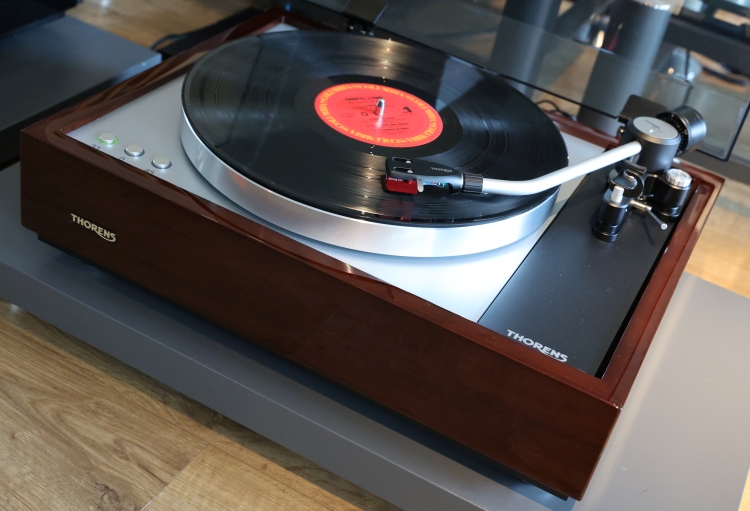
TP 92 Tonearm
The TP 92 tonearm was first issued in 2009 along with the TD 309 turntable and later re-issued along with the TD 1600 and TD 1601 turntables, to which it was fitted as standard. This arm is manufactured from high-quality cold-forged aluminum and uses high-precision Japanese ball bearings containing a specially developed oil. Compared to the classic TP 16 MkII, the TP 92 was improved in many ways while maintaining the manner in which the cartridge is mounted directly underneath the tonearm tube. With the TP 16 MkII, as well as the TP 92, the headshell is very minimalistic: basically just a small intermediate metal or aluminum plate. While minimal, this design was chosen specifically because it ensures that the pick-up cartridge’s center of gravity is always directly underneath the tonearm tube, thus preventing torsional vibrations.
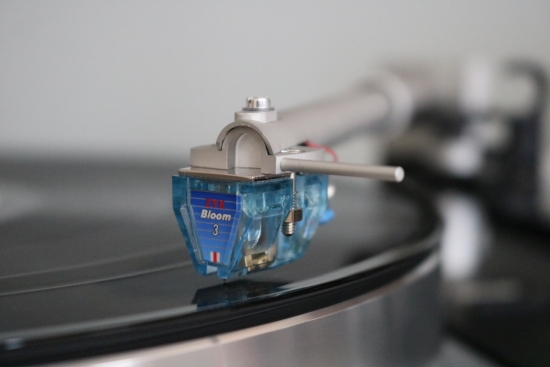
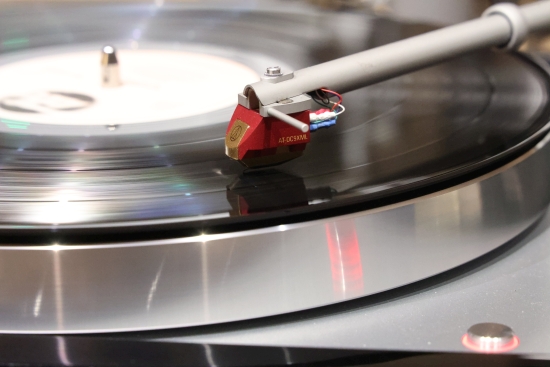
The classic TP 16 MkII arm was divided into two sections that were joined using a Thorens-proprietary connection. While this design was only compatible with Thorens arms, it allowed the user to detach the front section for easy cartridge mounting. Conversely, the TP 92 arm consists of a single piece, which allows for an even stiffer assembly that leads to certain sonic advantages, but it makes mounting a cartridge less convenient. And, of course, neither of these arms is compatible with the widely used SME headshell connection.
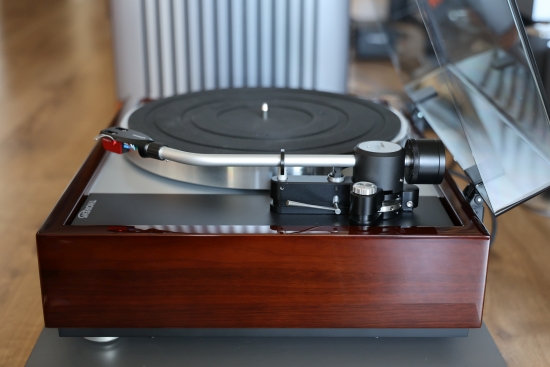
TP 160 Tonearm
Developed by the renowned designer Helmut Thiele, this J-shaped 9″ tonearm takes inspiration from the design of famous studio tonearms.
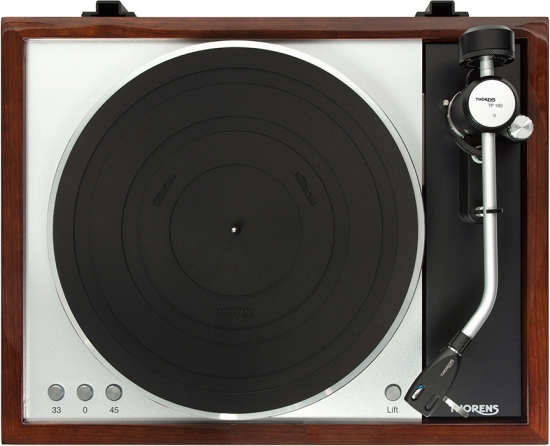
The TP 160 features an ultra-precise Knife Edge design for the horizontal bearing (for the arm’s vertical movement), a first in Thorens‘ history. This type of bearing does not use balls or bushings for the vertical movement of the arm but instead relies on gravity to hold the arm in place, similar to a UniPivot bearing. Unlike a Unipivot bearing, however, the Knife-Edge bearing is very stable. This bearing type can be visualized as a sharp-ended protrusion underneath the arm that sits in a V-shaped cradle. In some designs, there’s one cradle on each side of the arm tube, but the Thorens design implements the knife as a single piece, much like a razor blade balanced on its sharp edge.
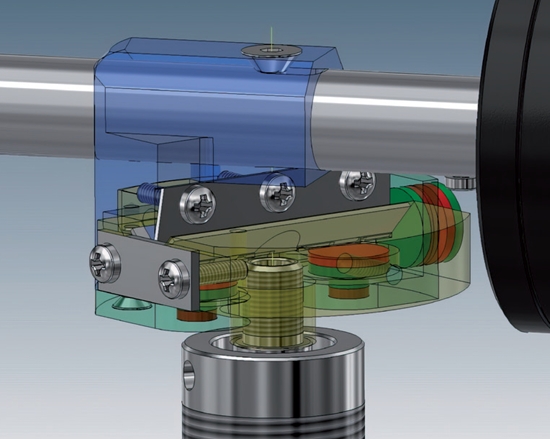
Uniquely, the blade is additionally stabilized by magnets. When handling the arm or rotating the arm tube, you can feel that the knife is being pulled down and to the side by a magnetic field. This extra measure is said to prevent any tendency to wobble and ensure the most precise tracking.
With its unique combination of physical properties, this type of bearing is simultaneously well-coupled and very free in its movement.
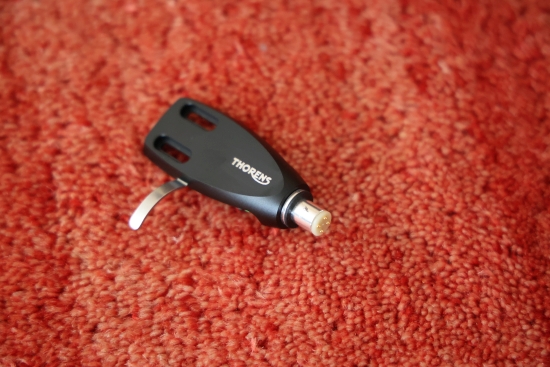

A very welcome new feature is that the TP 160 features a machined, detachable headshell with an SME connection. This means it is compatible with any SME-connector-type headshell from any brand. The beauty of this concept is that it massively simplifies cartridge mounting and allows easy swapping of pre-mounted cartridges in multiple headshells. A very high-quality headshell is supplied with the player and they are also available separately.
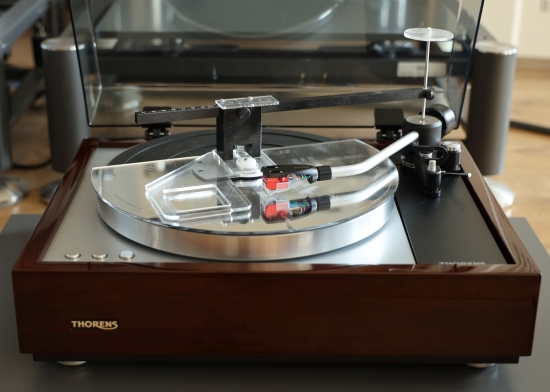
I normally adjust cartridges using an Acoustical Systems SMARTractor protractor with the Loefgren B DIN alignment, but the turntable comes complete with a thick plasticized paper protractor, which also works well.
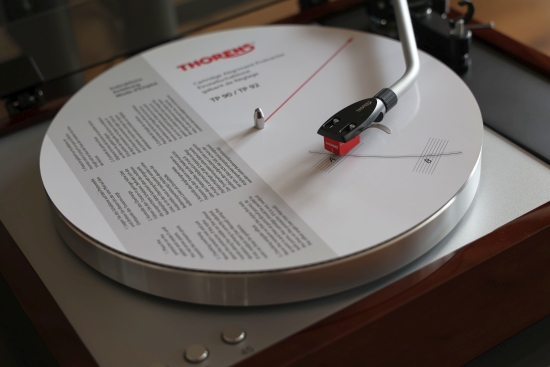
Using either protractor, I had to mount the cartridge all the way to the back of the headshell to achieve the correct overhang.
Contrary to the TP 92’s magnetic Anti-skating mechanism, the TP 160 employs a more traditional method using a spring. The arm‘s height (Vertical Tracking Angle, in short, VTA) is conveniently adjustable using a rotary dial at the armbase. The VTA position is then locked in place using 2 small hex screws on each side of the vertical bearing. The arm base itself is locked in place using a larger hex screw in the back that screws onto a vertical rod connected to the armboard. While very clever and more secure than the VTA mechanism used for the TP 92, I found that the TP 160 mechanism had to be set to its maximum height to achieve the perfect VTA for the TAS 1600 cartridge. The VTA ring will allow the arm to go up quite a bit higher still, but then the fixation screw would end up above the vertical rod, leaving the arm assembly secured only by the VTA ring. It won’t go anywhere, but the threads allow for a defined amount of play. So, effectively, a TAS 1600 cartridge is the tallest cartridge that can be mounted to the TAS 160 arm. In practice, though, given that my other cartridges were either the same height or less tall, you won’t soon run into this limitation.
Azimuth is adjustable within the headshell itself using a hex screw located on the underside. After loosening the screw, the headshell can freely rotate around its axis. If need be, Azimuth can also be adjusted via a screw on top of the bearing housing. As this is not the recommended manner of adjustement, it is located underneath the aluminum cover with the Thorens logo. Please note that loosening this screw can also affect the overhang. The Azimuth was set perfectly at the factory and there will normally be no need to adjust this. But by far, the easiest way to set the Azimuth is by utilizing the small amount of rotary play in the SME connector that exists between the centering pin and its slot before tightening the collar. The amount of play is very slight but enough to be used to our benefit to get the Azimuth just right. Once the collar is tightened, the headshell is secured perfectly with zero play. By the way, this mechanism can also be used to fine-tune the balance between tightness/bite and warmth/flow by tightening more loosely or tightly. If this all sounds fiddly, please note that I mention these aspects only for OCD people like myself, who want to have control over every parameter to get the sound just right, and the TAS 160 caters to this perfectly. The TAS 160 is no different than any other SME-compatible arm in these respects. For those who wish just to play music and not worry about this level of fine-tuning, I can confirm that the player sounds great no matter how precisely you set the Azimuth or how tightly the headshell is secured.
The scaled two-piece counterweight simplifies the precise adjustment of the required tracking force and ensures that even heavy cartridges weighing up to 30 grams can be balanced precisely.
Next: TAS 1600 and TAS 1500 Cartridges, and Listening
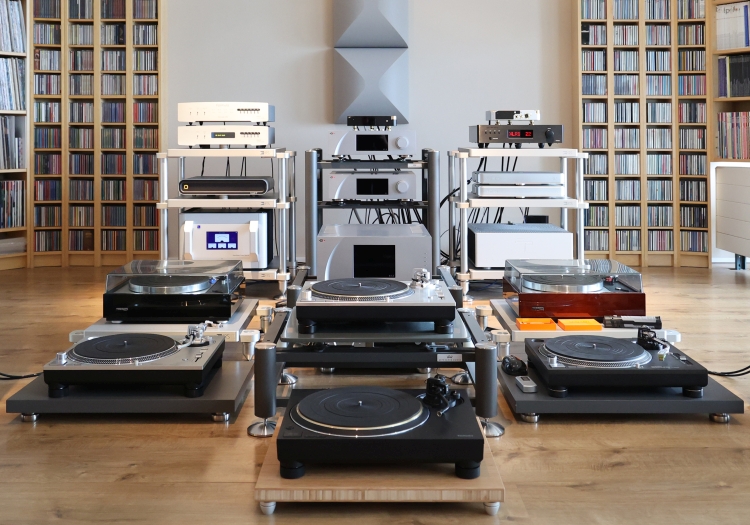
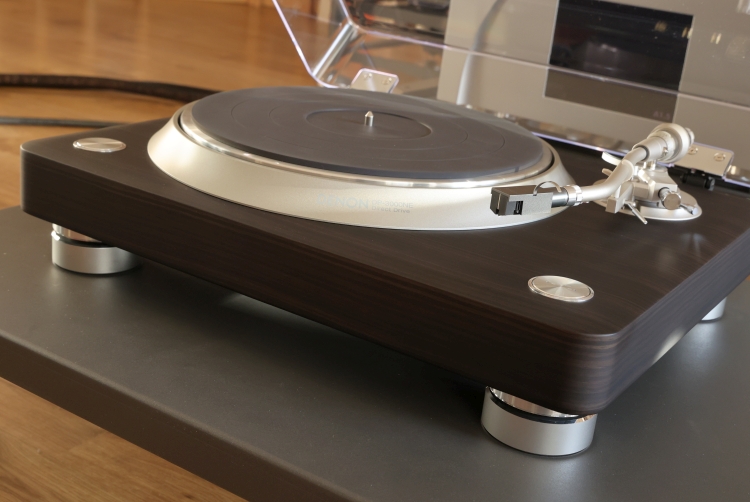
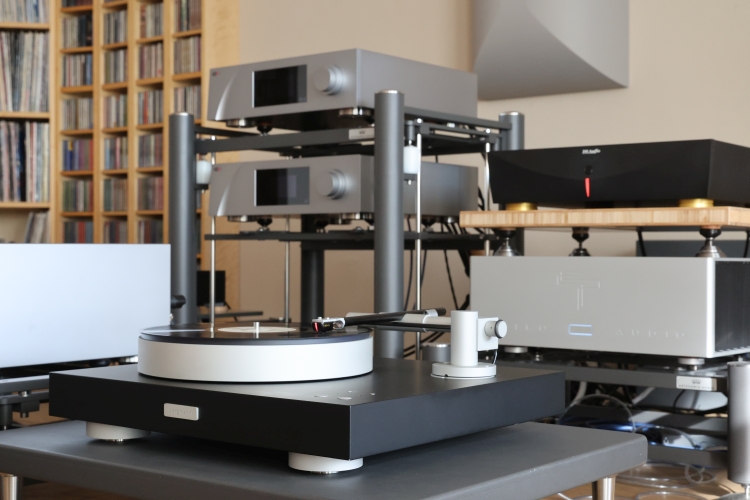
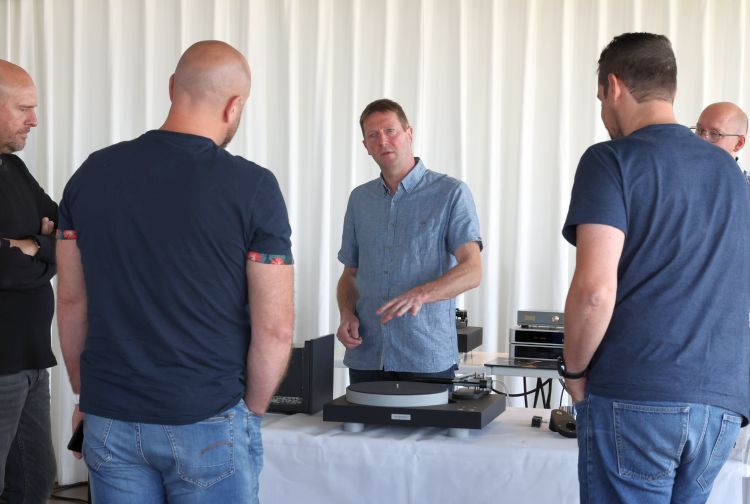
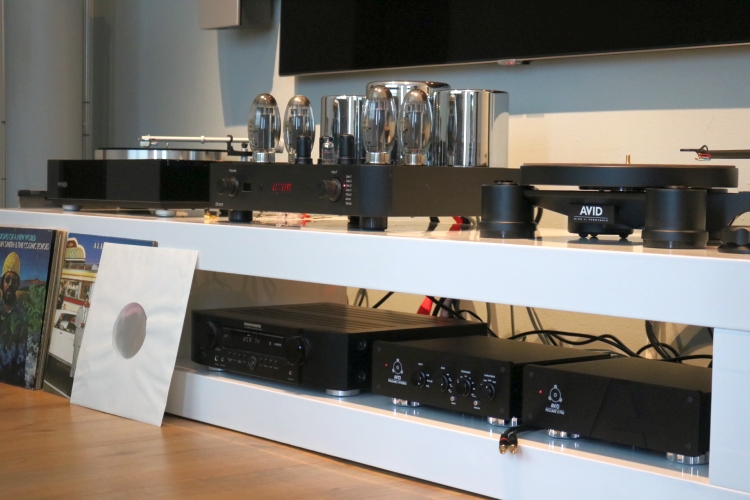
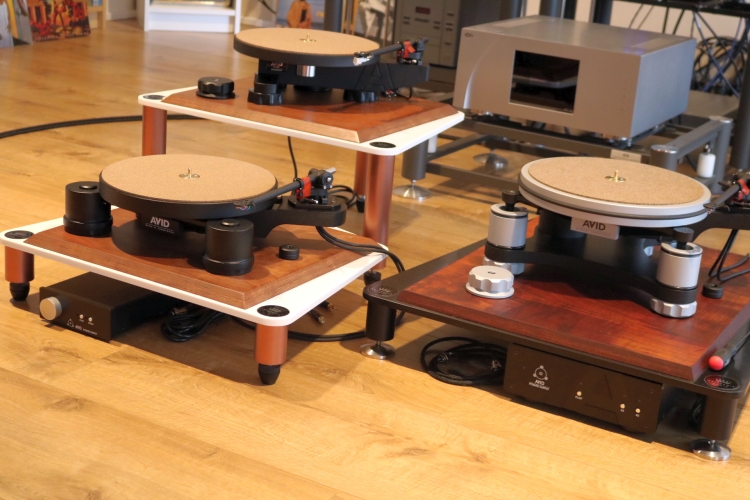
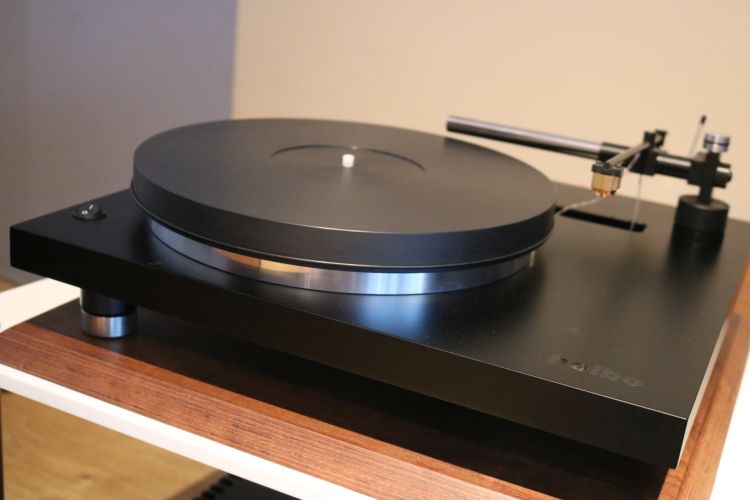
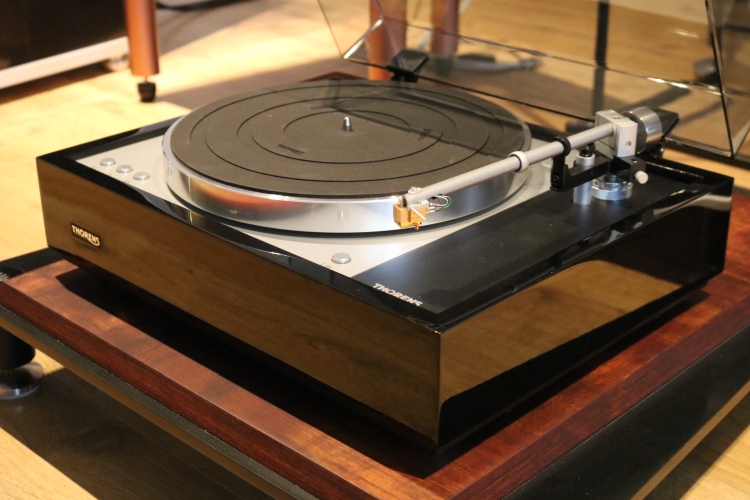
Yet another superb review, thanks. For whatever it is worth, I found a discrepancy between the general info and the manual regarding the TP 160 effective mass. I emailed Thorens and Mr. Gunter Künter himself answered: it is 16 grams.
Thanks, Vladimir. I have now amended the Effective Mass value in the review from 15 grams to 16 grams.
Hello Christiaan
I’ve just bought a new TD 1600 with 92 tonearm. After properly set up to my surprise the suspended chassis is wobbling side to side like 1,2 mm while playing. And when actually starts it is like a little earth quake shaking (if I may say that). Then it is slowly attenuating, but when playing is not steady still.
I haven’t contacted the dealer yet, since I’m not sure if this is a normal behavior or not.
Kindly please advise
John
The wobble when starting the platter is normal, some players (sometimes the belts) have it more than others. I wouldn’t worry about it. When on speed and rotating, the platter should be perfectly still. The subchassis can move freely to one side, but should be restrained to the opposing side. If there is play to both sides, the internal string should be tightened.